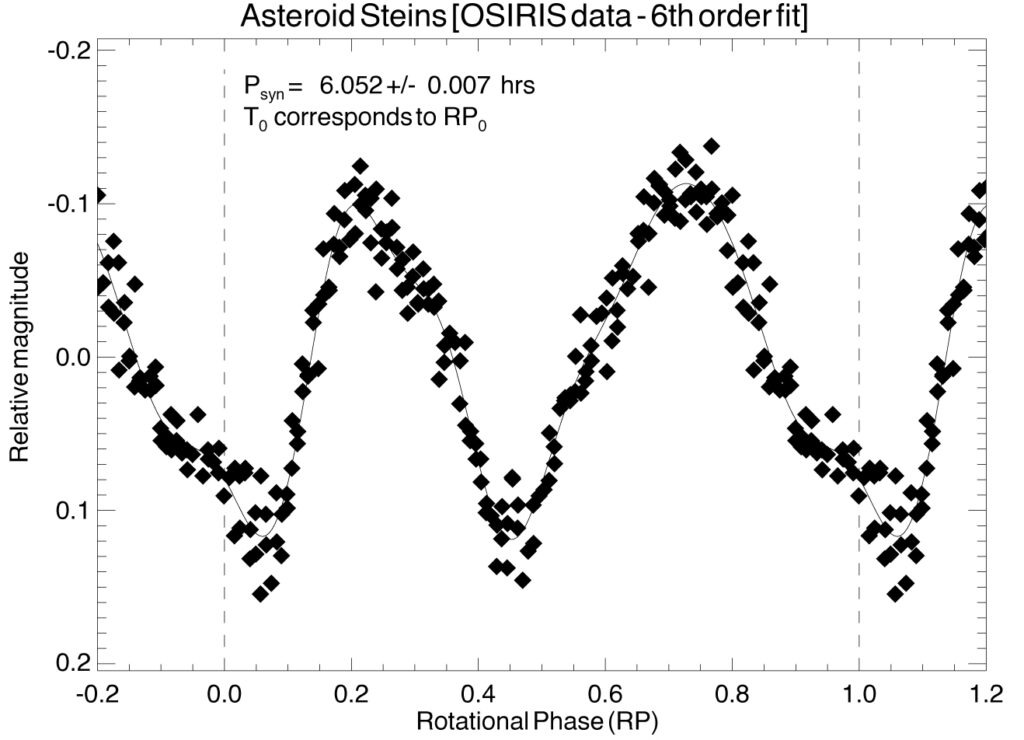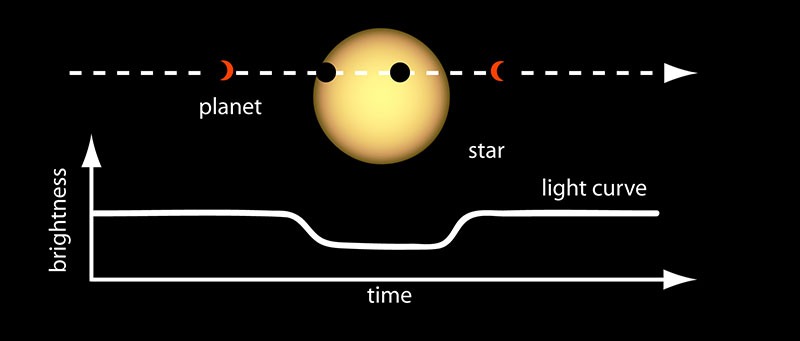Do you know that you can learn about an asteroid, comet, or even entire planetary systems from Earth, just by looking at how their brightness change over time? Today, we’ll talk about lightcurves, an amazing method to learn a lot about an object from telescopes on Earth.
How To Collect Lightcurve Data?
Lightcurve data is collected by telescopes. When a telescope aims at an object or a specific patch of the sky, it collects brightness data on individual locations in the sky, which corresponds to the location of stars or asteroids. This task is done frequently and over some time, from minutes when observing asteroid occultations to days or months when searching for exoplanets. At that point, the observer has collected lightcurve data. It then sends the data back to researchers to analyze and deduce incredible amounts of properties of the target object, even if it is astronomical units or even light-years away.
Finding Exoplanets
First, lightcurves can be used to find exoplanets. Exoplanets are planets orbiting stars many light-years away. So how did we find many of them, despite this challenge? Well, there are many indirect ways to detect exoplanets, and the most successful is the transit method.
If the straight line between an exoplanet and its host star passes through Earth, the planet can obscure the star slightly. The planet cannot occult the star entirely as it is so tiny, but it causes a slight dimming of the star as seen from Earth. This is noticed when an observer collects lightcurve data on the star. By observing the frequency of these dimming events, we can infer the planet’s orbital period. Moreover, we can also estimate the planet’s size based on how much the star’s brightness decreases when the planet passes between us and the star.
The famous Kepler Space Telescope and TESS telescope (Transiting Exoplanet Survey Satellite) used this method to find hundreds, if not thousands, of exoplanets, and devised their basic physical and orbital properties. They helped us refine theories about how planetary systems form, as our Solar System does not look anything like what we’ve detected so far.
Exploring Variable and Binary Stars
Besides finding planets around distant stars, lightcurves are also good at pointing out variable stars. These stars’ brightness changes periodically, making lightcurve data the perfect tool to analyze them. Therefore, other than keeping an eye on transits, exoplanet finders can also find variable stars.
One of the most interesting variable stars are the Cepheid variables. Their period of pulsation, as can be obtained through lightcurve data, can infer their brightness. Combined with the absolute magnitude of the star seen from Earth, this can help us find the distance between us and the star. This is very useful when we try to measure distances to distant galaxies and can help us refine the scale of the Universe.
Moreover, the reasons that a star’s brightness changes may not be intrinsic. It could be that a companion is constantly transiting the star. Again, this is similar to the transit method we use to find exoplanets, but if the companion has a significant brightness compared to the binary, we see two dips in brightness as the companion comes in front of and hides behind the primary star. By analyzing the intensity and duration of the dips, we can infer the companion’s brightness and orbital period. These are important pieces of data for refining the theories of stellar formation!
Exploring Asteroids and Comets
Besides finding exoplanets and variable stars, lightcurve data is also used to explore asteroids and comets. By observing how its apparent brightness changes over periods of hours and days, researchers can determine the asteroid’s rotation period based on how often the same lightcurve pattern repeats. And by doing in-depth analyses on the data, we can even approximate an asteroid’s shape.
Moreover, astronomers can observe moons around asteroids by analyzing the lightcurve data. If an asteroid moon is transiting its parent asteroid when seen from Earth, there are periodic dips of brightness of the asteroid over its rotation. This is similar to the transit technique we use to detect exoplanets around other stars. By obtaining the transits’ duration, period, and intensity, we can infer the asteroid’s distance, orbital period, and size, respectively.

Image credit: Stefano Mottola (DLR), OSIRIS team
Source: https://sci.esa.int/web/rosetta/-/40860-lightcurve-of-asteroid-2867-steins
Furthermore, lightcurve data can help us learn a lot about an object when it occults a star. The duration of the occultation can help us estimate the object’s diameter accurately, while other properties of the lightcurve can help us devise properties of structures around the object. For example, when the asteroid 10199 Chariklo passed in front of a star, secondary transits were observed besides the main event. As a result, it was determined that the large asteroid had rings! (Braga-Ribas et al, 2014). Although all gas giants in the outer Solar System house these structures, it’s a unique property among objects as small as asteroids.
Conclusion
In this article, we have introduced:
- How telescopes collect lightcurve data
- How it can be used to find exoplanets
- How it can observe binary stars and variable stars
- How it explores asteroids and comets
Even though space agencies cannot send spacecraft to every interesting target we would want to explore, we still have ways to explore them by observing how their brightness changes over time. If you’d like to learn about the most intriguing asteroids and comets to explore, click on this link to read this article. Also, if we have missed any important points we should have included, please leave your suggestions in the comments below.
References
- Braga-Ribas, F. et al. (2014, September 25). “A ring system detected around the Centaur (10199) Chariklo”. Retrieved December 16, 2022, from https://arxiv.org/abs/1409.7259

